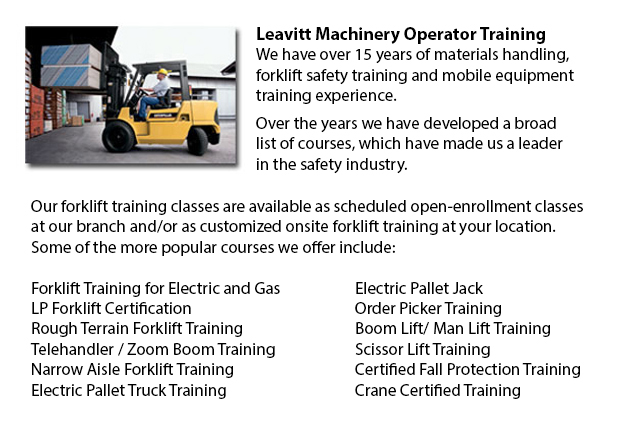
Aerial Lift Training Ottawa - Aerial hoists might be used to accomplish numerous unique duties performed in hard to reach aerial spaces. A few of the duties associated with this kind of lift include performing routine upkeep on buildings with elevated ceilings, repairing telephone and utility cables, raising heavy shelving units, and trimming tree branches. A ladder could also be utilized for many of the aforementioned tasks, although aerial lifts offer more safety and stability when properly used.
There are a variety of distinctive versions of aerial forklifts accessible, each being able to perform slightly unique tasks. Painters will sometimes use a scissor lift platform, which is able to be utilized to get in touch with the 2nd story of buildings. The scissor aerial jacks use criss-cross braces to stretch out and lengthen upwards. There is a table attached to the top of the braces that rises simultaneously as the criss-cross braces elevate.
Container trucks and cherry pickers are a different variety of aerial lift. They contain a bucket platform on top of an elongated arm. As this arm unfolds, the attached platform rises. Lift trucks utilize a pronged arm that rises upwards as the lever is moved. Boom lifts have a hydraulic arm that extends outward and elevates the platform. Every one of these aerial lift trucks call for special training to operate.
Training programs offered through Occupational Safety & Health Association, known also as OSHA, embrace safety procedures, machine operation, upkeep and inspection and device weight capacities. Successful completion of these training programs earns a special certified certificate. Only properly certified individuals who have OSHA operating licenses should drive aerial platform lifts. The Occupational Safety & Health Organization has established guidelines to uphold safety and prevent injury when utilizing aerial lift trucks. Common sense rules such as not using this machine to give rides and ensuring all tires on aerial lift trucks are braced so as to prevent machine tipping are observed within the rules.
Regrettably, figures illustrate that in excess of 20 operators pass away each year while running aerial lifts and 8% of those are commercial painters. The majority of these mishaps are due to improper tire bracing and the hoist falling over; for that reason a lot of of these deaths had been preventable. Operators should make certain that all wheels are locked and braces as a critical security precaution to prevent the machine from toppling over.
Other rules involve marking the surrounding area of the machine in an observable way to safeguard passers-by and to guarantee they do not approach too close to the operating machine. It is vital to ensure that there are also 10 feet of clearance amid any electrical cables and the aerial hoist. Operators of this machinery are also highly recommended to always wear the appropriate security harness while up in the air.
-
Scissor Lifts
Scissor Lift Training Ottawa - The scissor lift, often acknowledged as a table lift, is an industrialized lift that has been customized for use within wholesale and retail environments. Mechanized lifts have been used for decades in the manufacturing... More -
Rough Terrain Forklifts
Rough Terrain Forklifts Training Ottawa - There are in fact two different classifications of forklifts within the materials handling market, the industrial model and the rough terrain model. Rough terrain lift trucks first arrived on the market in th... More -
Clark Forklift
Clark Forklift Forklift Training - Performing globally, there are currently 350,000 Clark forklifts and lift vehicles in operation, with in excess of 250,000 of those in commission in North America. Clark has five main lines of forklifts across the w... More -
Pallet Stackers
Pallet Stackers Training Ottawa - Pallet stackers are a style of pallet jack that can be used to stack, transport and haul merchandise placed on a pallet that are far too burdensome for manual lifting. Mostly these mechanisms are employed to load and... More -
Pallet Lifts
Pallet Lifts Training Ottawa - A pallet lift is a device intended in particular for transporting pallets of varying weights and sizes. They might be utilized in conjunction with cranes, platform lifts and other heavy duty equipment as an appendage pi... More

Forklift Training Ottawa
Ottawa, Ontario
forklifttrainingottawa.com
Email Us
About Us


